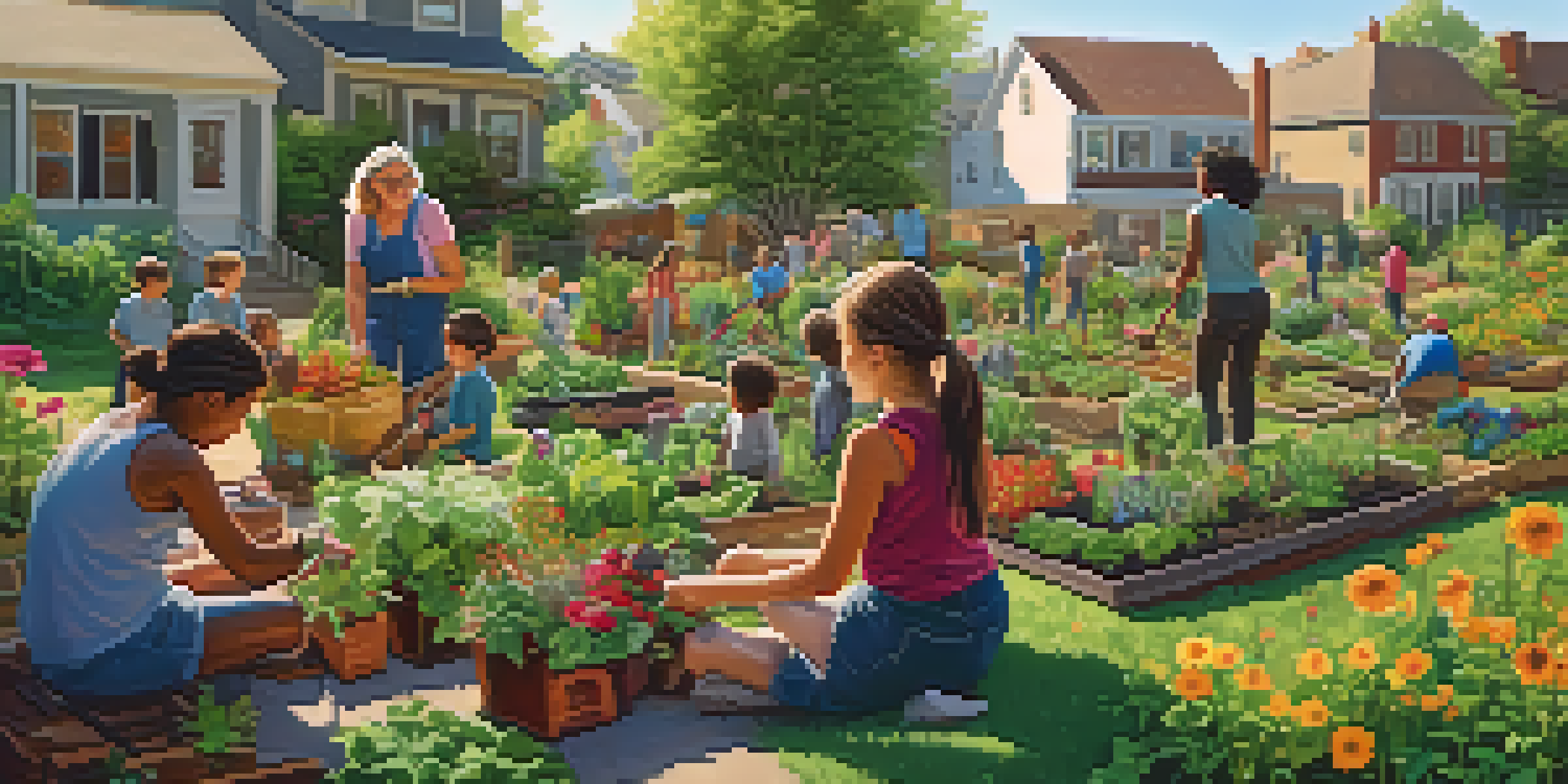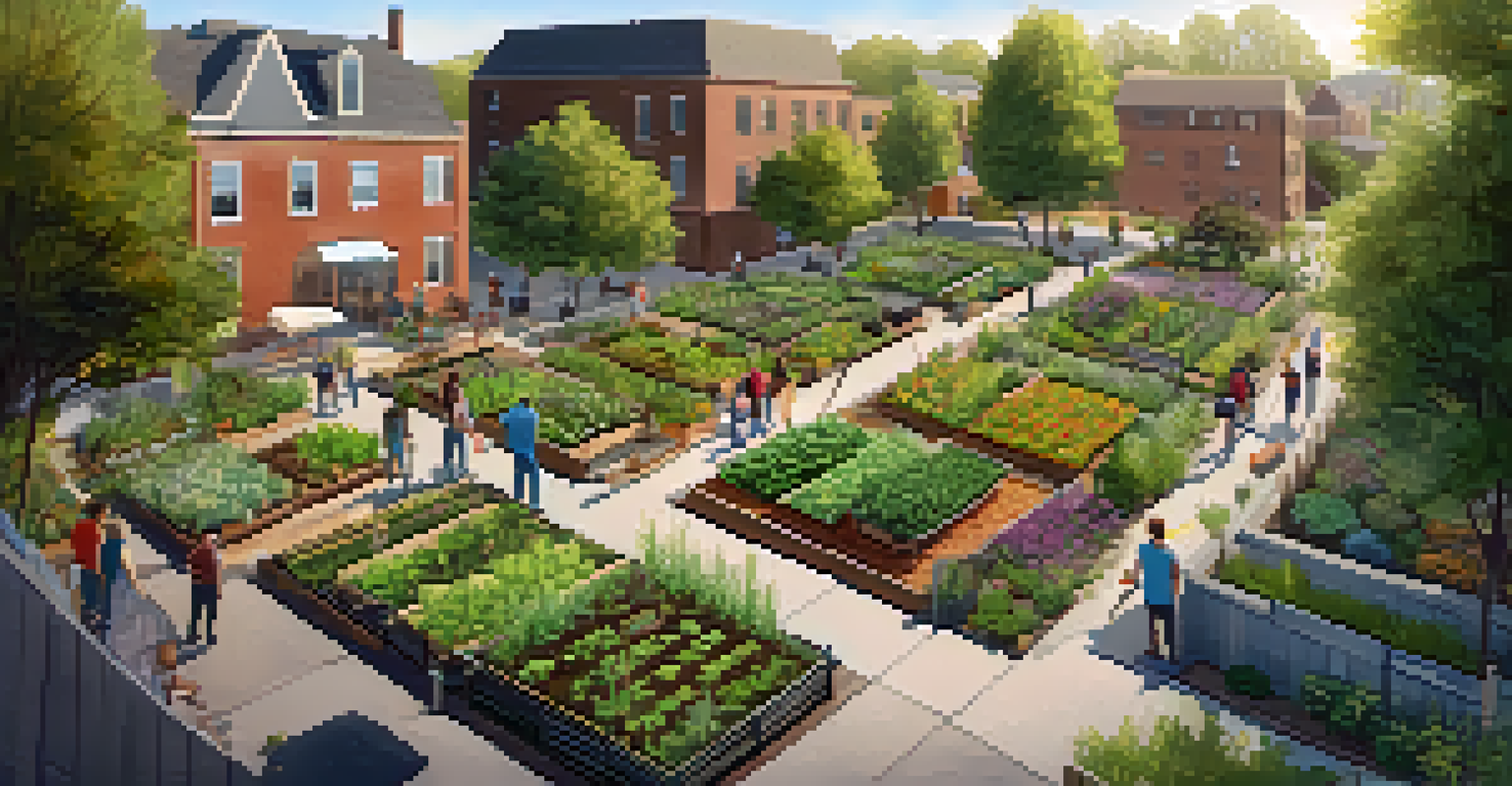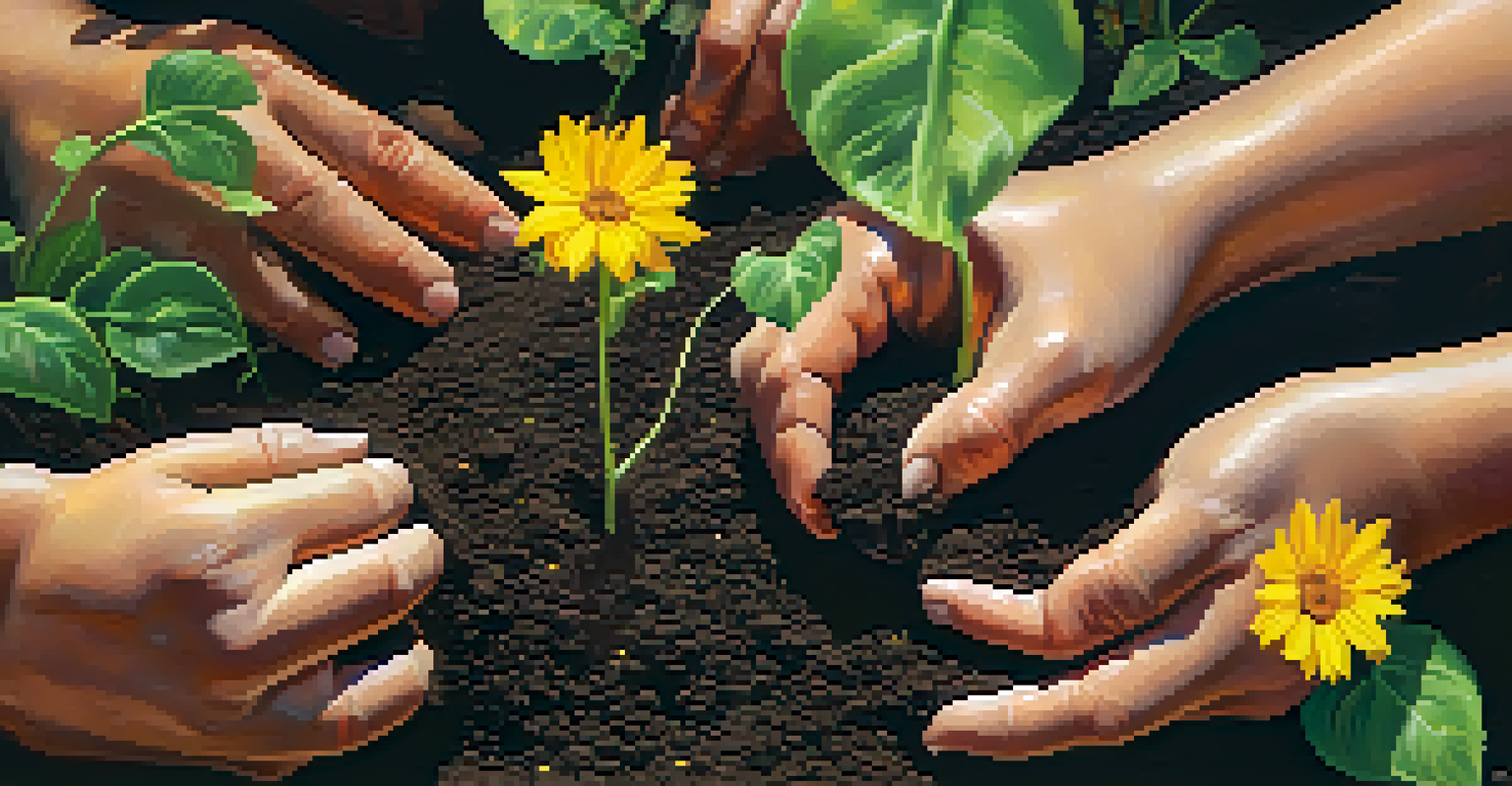Community Gardening: Engaging the Community in Wellness Activities

The Essence of Community Gardening: More Than Just Plants
Community gardening is a collaborative effort where people come together to cultivate shared plots of land. It's not just about growing vegetables and flowers; it’s about growing connections among neighbors. This practice transforms vacant lots into vibrant green spaces that echo with laughter and camaraderie.
The best time to plant a tree was twenty years ago. The second best time is now.
Imagine a group of diverse individuals, each with their unique backgrounds, united by a common purpose—nurturing a garden. As they dig, plant, and harvest side by side, they share stories and experiences, fostering a sense of belonging. This social interaction is a key aspect of wellness, as human connections significantly contribute to our mental health.
Moreover, community gardens often serve as educational hubs where individuals learn about sustainable practices and healthy eating. This knowledge empowers them to make better choices for themselves and their families, creating a ripple effect of wellness throughout the community.
Physical Health Benefits of Community Gardening
Engaging in community gardening is a fantastic way to boost physical health. The act of gardening involves various physical activities, from digging and weeding to planting and harvesting, which can provide a full-body workout. Spending time outdoors in the fresh air and sunlight also promotes physical well-being.

Research shows that regular physical activity, such as gardening, can reduce the risk of chronic diseases like obesity, heart disease, and diabetes. It’s an enjoyable way to stay active without the monotony of a gym. Plus, the satisfaction of watching your plants thrive adds an extra layer of fulfillment to the exercise.
Community Gardening Builds Connections
Beyond planting, community gardening fosters relationships and a sense of belonging among neighbors.
Additionally, community gardens often produce fresh, nutritious food that is readily available to participants. This access to healthy produce encourages better dietary habits, further enhancing overall wellness and vitality within the community.
Mental Health and Emotional Well-Being Through Gardening
Gardening is not only beneficial for physical health but also plays a crucial role in mental health. The rhythmic activities of planting and tending to a garden can be meditative, providing a calming effect that reduces stress and anxiety. Being in nature has been shown to improve mood and promote feelings of happiness.
Gardening adds years to your life and life to your years.
Engaging with the earth and nurturing plants fosters a sense of accomplishment and purpose. This connection to nature reminds us of the cycles of life, helping to ground us during challenging times. Many gardeners report feeling a sense of peace and satisfaction as they watch their labor yield beautiful results.
Furthermore, community gardening often creates a support network, as members share their challenges and triumphs. This social support can be invaluable for emotional well-being, helping to combat feelings of loneliness and isolation that many people experience.
Building Community Bonds Through Shared Activities
One of the most beautiful aspects of community gardening is its ability to foster strong community bonds. When people work together towards a common goal, they build trust and friendships that might not have developed otherwise. These relationships can extend beyond the garden, creating a tight-knit community.
Events like potlucks, garden tours, and workshops further enhance these connections. Neighbors come together not just to cultivate plants but to celebrate their accomplishments and learn from one another. This sense of belonging is vital for community cohesion and can lead to collaborative efforts on other local initiatives.
Health Benefits of Gardening
Gardening promotes physical health through exercise and access to fresh produce, while also supporting mental well-being.
Moreover, community gardens often become a safe space for dialogue, where diverse voices and perspectives can be shared. These interactions can break down barriers and foster understanding among individuals from different backgrounds, enriching the community as a whole.
Environmental Benefits of Community Gardening
Community gardening also contributes positively to the environment. By transforming unused land into green spaces, these gardens improve air quality and promote biodiversity. They can attract beneficial insects and birds, creating a balanced ecosystem that supports local wildlife.
Additionally, community gardens often implement sustainable practices, such as composting and organic gardening. These methods reduce waste and minimize the use of harmful chemicals, promoting healthier soil and plants. In this way, community gardening not only nourishes the body but also the earth.
As communities become more engaged with their environment, awareness grows about the importance of sustainability. This collective effort can inspire other eco-friendly initiatives, leading to a more environmentally conscious community.
Inclusivity and Accessibility in Community Gardening
A key principle of community gardening is inclusivity, allowing individuals from all walks of life to participate. Many gardens are designed to be accessible to everyone, including those with physical disabilities or mobility challenges. Raised beds and accessible pathways ensure that gardening can be enjoyed by all.
By embracing diversity, community gardens create spaces where everyone can contribute their unique skills and knowledge. This inclusivity enriches the gardening experience, as individuals bring different perspectives and ideas to the table. It also fosters a sense of belonging that can be transformative for marginalized communities.
Inclusivity in Gardening Spaces
Community gardens prioritize inclusivity, allowing diverse individuals to participate and contribute their unique skills.
Additionally, many community gardens offer educational programs for children and adults alike, teaching valuable life skills and knowledge about gardening. These initiatives help cultivate a love for nature and gardening, ensuring that future generations continue the tradition of community engagement.
Starting Your Own Community Garden: A Step-by-Step Guide
If you're inspired to start a community garden, the first step is to gather interested individuals and discuss the vision for the garden. Identify a suitable location, such as a vacant lot or park, and secure permission from the landowner or local authorities. This collaborative approach sets the foundation for a successful gardening project.
Next, develop a plan for the garden layout, including what to plant and how to divide responsibilities among participants. Consider incorporating elements that reflect the community's culture and preferences, like traditional crops or flowers. This personalization helps everyone feel invested in the garden’s success.

Finally, organize regular meetings for garden maintenance and community events. Celebrate milestones together, whether it’s the first harvest or a seasonal festival. By working together and sharing the fruits of your labor, you’ll strengthen community ties while enjoying the many wellness benefits of gardening.